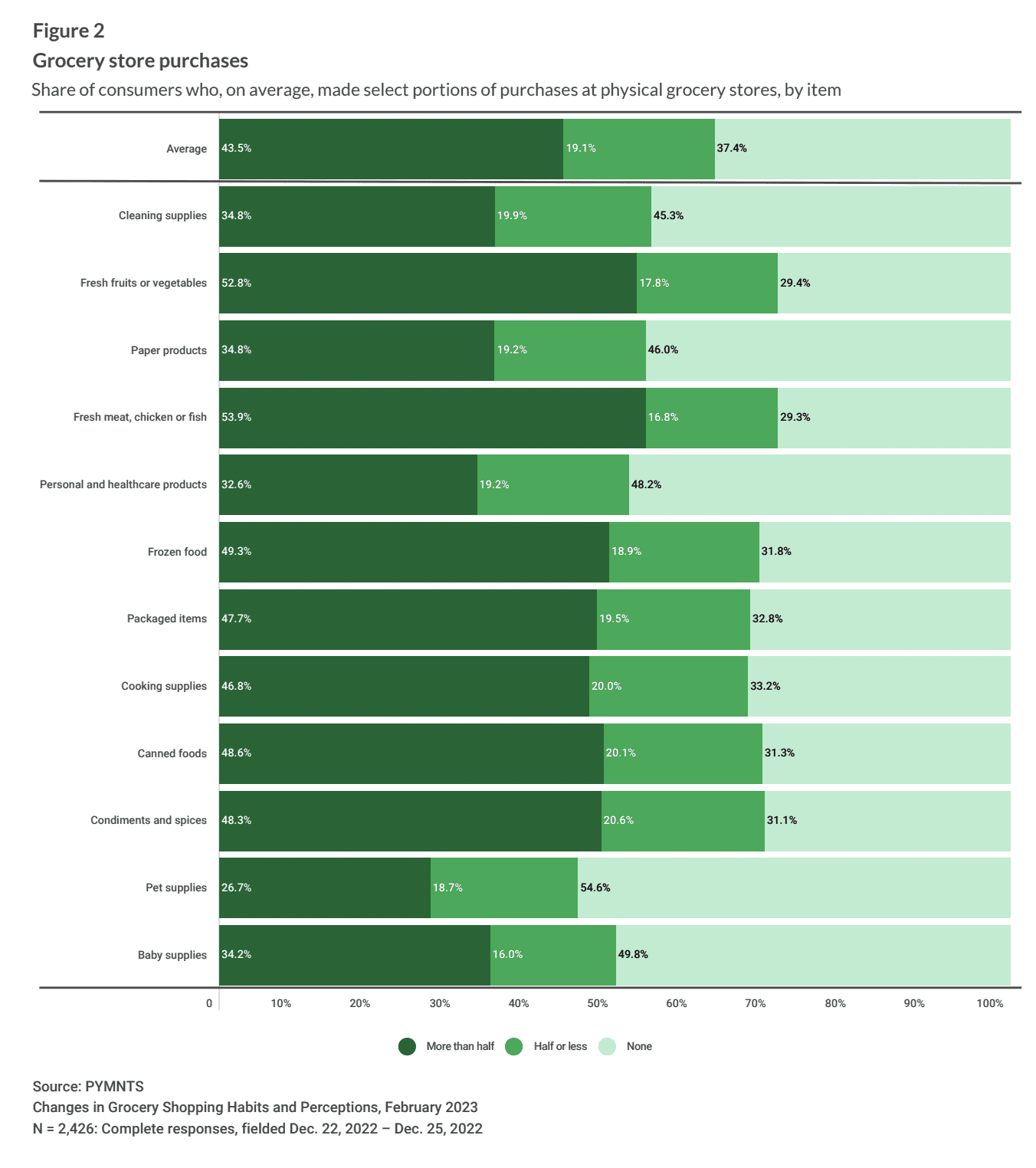
As consumers seek convenience, supermarkets lose personal care product sales to eCommerce, PYMNTS research shows.
In an effort to retain their customers, brick-and-mortar grocers and big box stores are stepping up their wellness offerings. For instance, Target announced the expansion of its center-aisle wellness offerings Thursday (Feb. 9) with more items such as vitamins and deodorants.
“Self-care is one of the areas where we are seeing the fastest growth,” Cassandra Jones, the retailer’s senior vice president of merchandising, essentials, beauty and health, said in a corporate blog post.
Plus, Albertsons Companies announced in a Monday (Feb. 6) press release that it is launching Sincerely Health, a wellness platform that includes fitness integrations with trackers such as Apple Health and Fitbit, pharmacy offerings such as prescription management tools and vaccine appointment scheduling and goal-tracking features, among others.
“As a grocery and pharmacy retailer committed to the health and wellness of our communities, we are empowering customers to have a connected and personalized view of their health across food, nutrition, activity, mental well-being and pharmacy services, enabling them to make more informed choices,” Omer Gajial, chief digital officer and executive vice president of health at Albertsons, said in the release.
Still, consumers are shifting to digital alternatives that allow them to shop from the comfort of their homes.
PYMNTS’ recent study “Changes in Grocery Shopping Habits and Perception,” which draws from a December survey of more than 2,400 U.S. consumers, seeks to identify how consumers’ grocery shopping behaviors have changed in the recent past as well as the factors influencing those shifts.
The study found that, while the majority of consumers get the bulk of their fresh produce and their meat and fish from physical stores, only 33% get most of their personal and healthcare products from physical retailers. Moreover, nearly half get these products exclusively via digital channels.
